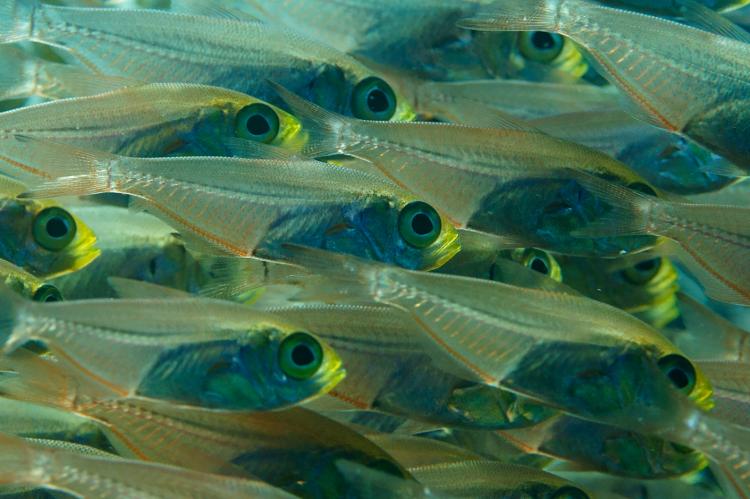How a school of fish moves as one
Large schools of fish always move as one, and researchers have discovered just how they manage to achieve such seamless coordination.
We’ve all seen those huge schools of fish that move as one and coordinate their movements so perfectly. New research has come up with a way to map the chain of direct interaction in such schools of fish, discovering that the fish pay attention to one or two of their neighbours at a time when the school moves as a group.
According to Dr Luca Giuggioli, Senior Lecturer in the Department of Engineering Mathematics at the University of Bristol, "Our research shows that in the relatively common aquarium fish, the rummy-nose tetra species who show very strong schooling behaviour, there is a small number of influential neighbors, typically one or two, and they are not necessarily the closest ones. Surprisingly, group co-ordination appears to take place by fish constantly changing who they decide to pay attention to."
By not having a fixed leader, the rummy-nose tetra species allows tasks to be divided among individuals efficiently. It also ensures that the group does not collapse due to the loss of the leader(s).
This international team of researchers had used both behaviourial analyses and a computer model in their study, the findings of which was published in a recent issue of PLoS Computational Biology.
The findings could be used to co-ordinate the actions of artificial systems and human-built agents, such as swarms of drones in search-and-rescue missions or environmental monitoring in the future.


